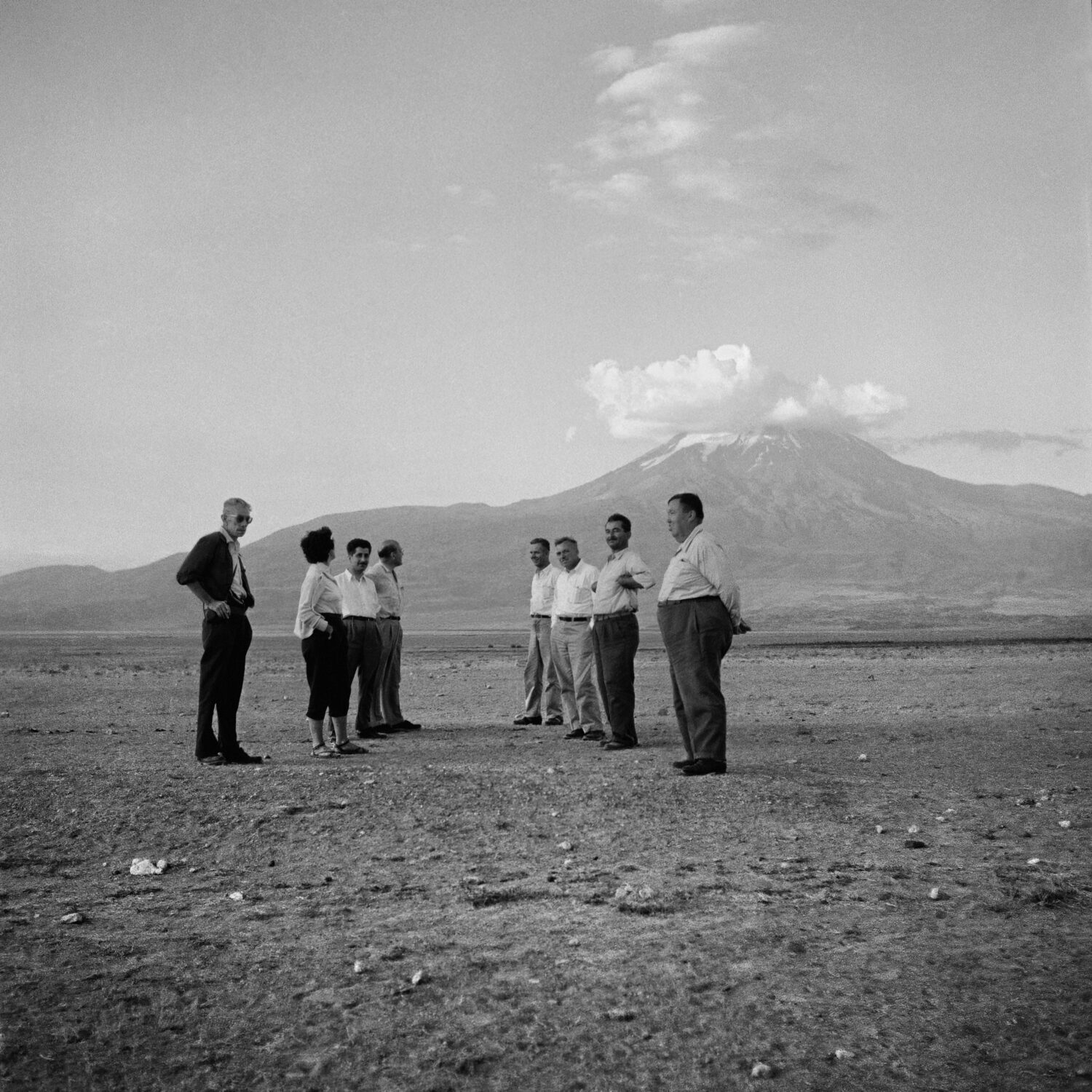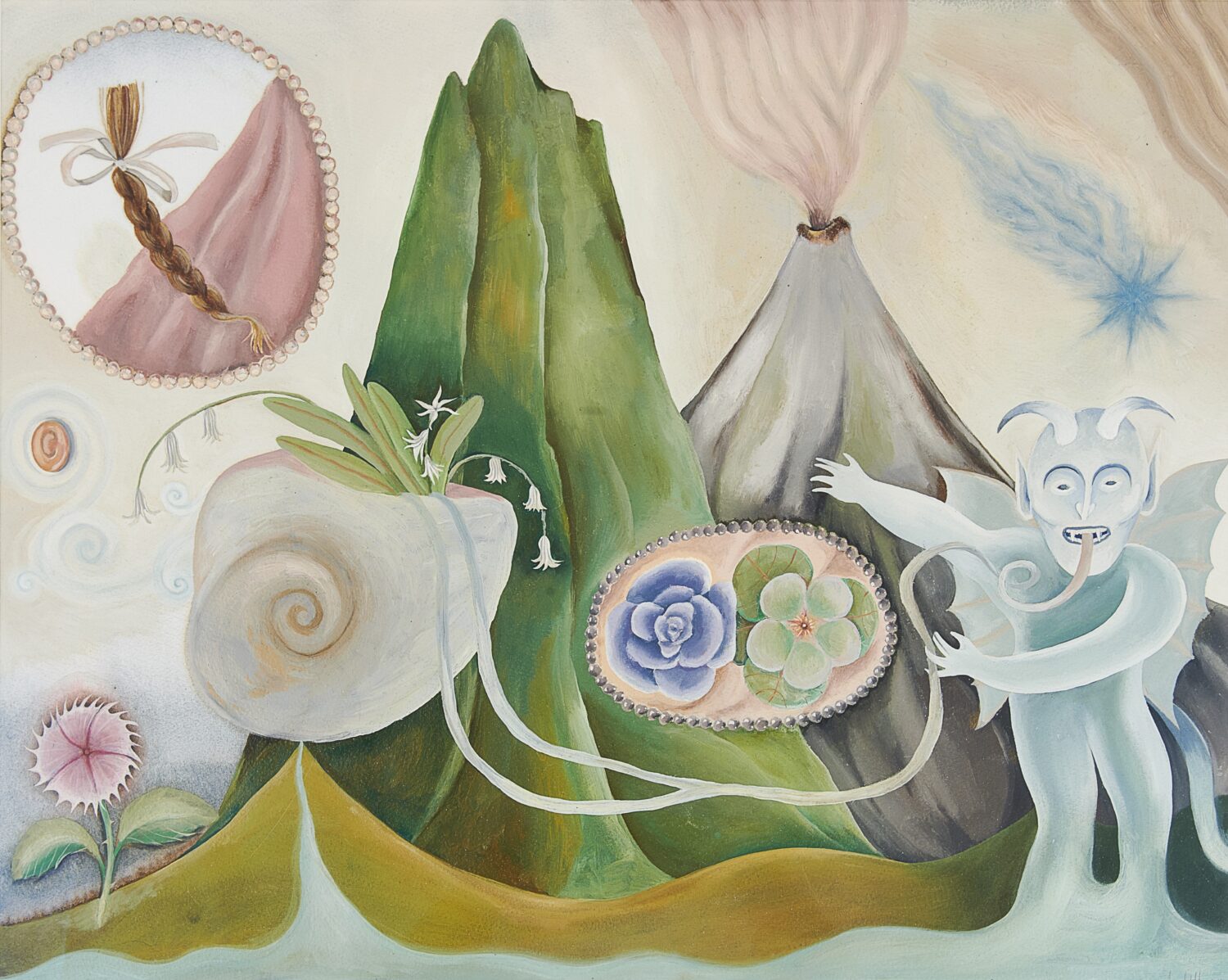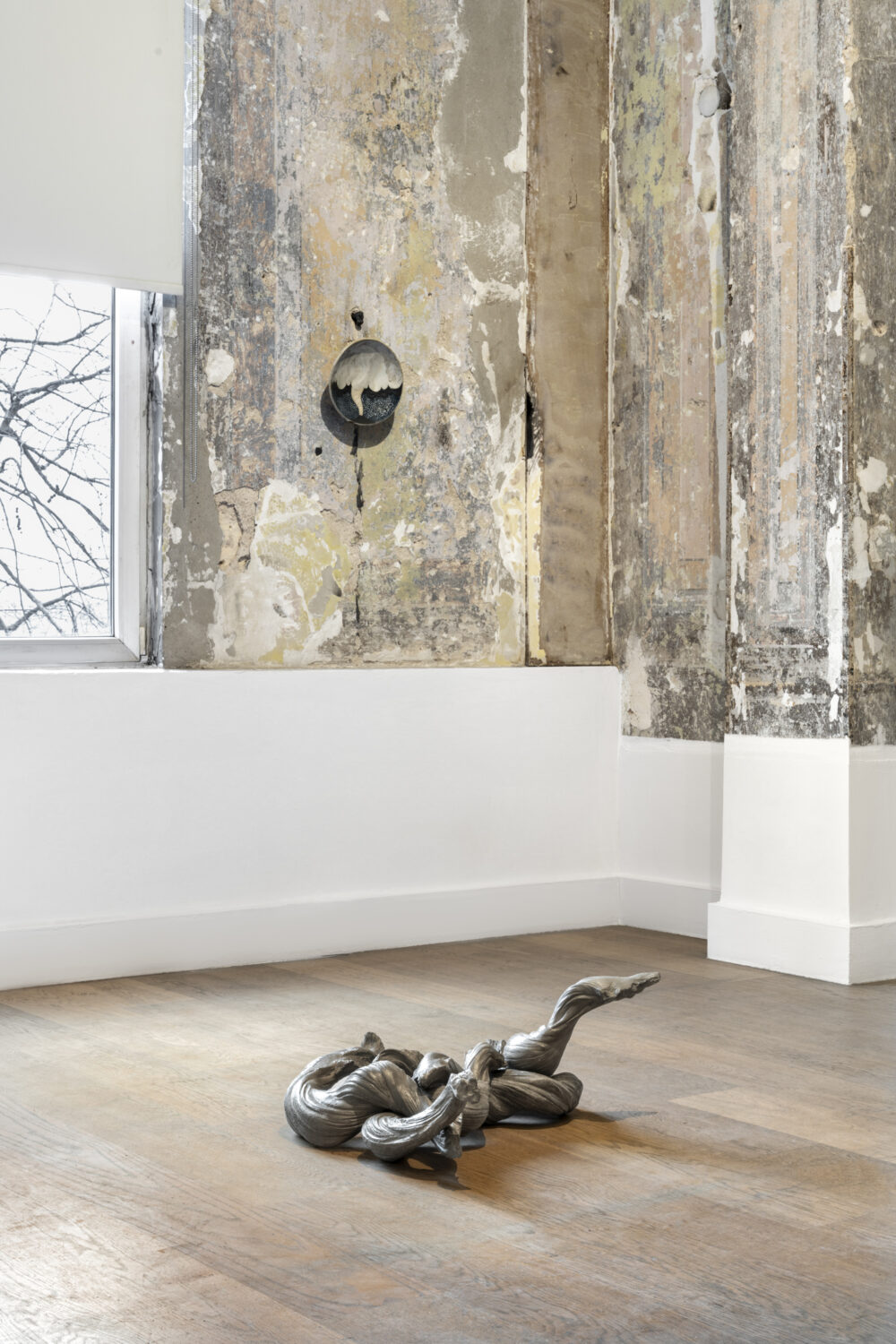The Volcano Lover
By Anlam de CosterThe theme of volcanoes has been circling in my mind and heart for years. What started as an innocent fascination and an uncanny sense of belonging when I visited Naples and Pompeii in 2001 evolved into a passion when I traveled to the slopes of Mount Etna the following year. In sum, it is a transformative coming-of-age story of a romantic teenager passionate about antiquity playing Beckett’s Happy Days on stage, haunted by abyssal volcanoes and what lies beneath.
Over time, this interest deepened—after all, Mount Vesuvius is perhaps the most popular volcano in art history and literature, drawing countless admirers. I am neither its first nor its last devotee. Or should I say… victim?
Years later, during the most suffocating days of the pandemic, I came across Susan Sontag’s novel The Volcano Lover and went down the rabbit hole. This obsession had to be transformed into an exhibition. I started seeing volcanoes and their reflections everywhere, and I still do.

When GALERIST invited me to curate a group show, I instinctively knew their 19th-century space would be perfect for embarking on this journey to the center of the earth. Luckily, the gallery team led by Müge Tümen Çubukçu shared my zealous enthusiasm for volcanoes, turning this dream into reality with their superhuman dedication.
Sontag’s historical novel is set in Naples in the late 18th century. I have this delusion that I was part of the Society of Dilettanti and intimately knew the novel’s protagonist, Sir William Hamilton, the British envoy extraordinary to the Kingdom of Naples for almost forty tumultuous years. He was a passionate collector, an archeologist who actively participated in the early excavations of Pompeii and Herculaneum, and a pioneering volcanologist who saw volcanoes as creative rather than destructive forces. His second wife, Emma Hamilton, is an uncontrollable and bewitching force of nature, as impenetrable and impossible to possess as his beloved Vesuvius.
In the novel, the erupting volcano serves as a metaphor for social and political upheavals along with explosive personal passions and desires. The connection between volcanoes and collecting is particularly significant—just as collectors attempt to defy mortality by accumulating and categorizing objects, volcanoes remind us of the limits of human control over nature’s power. The eruptions of Vesuvius, the ruins, and the tragic fate of Hamilton’s collection and his love for Emma alike highlight the balance between the transience of human life and the permanence of nature.

The world exists in a constant state of uncertainty, but, as Oscar Wilde once said, “The veryessence of romance is uncertainty.” We are going through a period much like the late 18th to 19th century, the era in which Sontag’s novel takes place. If you don’t believe me, ask astrologers about the cycles of Pluto and Neptune. Ecological crises, political upheavals, technological leaps, rapidly shifting ideological and social dynamics, and volcanoes erupting one after another in different corners of the world… In response to all this, we are witnessing a renewed desire to return to nature, a growing interest in prehistory and its mysteries, and a rising curiosity for esoteric, ancient knowledge. The volcano metaphor is directly linked to these fluctuations.
As a natural phenomenon to which we owe our planet’s creation and habitability, it simmers beneath the surface for centuries. Then it erupts with sudden, unpredictable force, causing destruction in the short term but ultimately necessary to release the pressure and create new ground.
This exhibition takes up precisely that cycle. Just as in nature, chaos is not an end but a beginning. The collapse of something often ushers in a new formation process on a personal and societal level. It feels like the world as we know it is ready to destroy itself with a cataclysmic event, but there is hope.

As I delved deeper, I wondered whether this unrequited love for volcanoes I share with Empedocles, Pliny, Emily Dickinson, Georges Bataille, or Etel Adnan, amongst countless others, resonated with contemporary artists. Through my conversations, I discovered that volcanoes offer artists a fecund ground for expression. Throughout history, they have captivated humanity, embodying contradictions: creation and destruction, awe and fear, passion and catastrophe. Through the artists’ lens, we approach volcanoes as an allegory—intertwined with the human psyche, collective memory, and mythology.
So, our exhibition, The Volcano Lover, is not just about a geological phenomenon but also about passion, transformation, and rebirth. Following Orphic hymns, we approach volcanoes, often seen as the Earth’s subconscious or a gateway to the underworld, as reflections of the human inner world.
Volcanoes resemble the cliché of an artist—constantly changing, in motion, unpredictable, yet possessing a unique rhythm. The creative processes of some artists involve self-destruction, akin to volcanoes that explode, destroying their peaks and generating new islands. At times, curators experience something similar, too.

One of the fascinating aspects of this journey was recognizing that volcanoes, much like humans, have distinct personalities. Throughout history, people have named volcanoes as if they were individuals, attributing them human traits and even forming emotional bonds with them. Volcanoes have been identified with gods and goddesses, sacrifices were made to appease them, and their spewing fire was seen as divine wrath. I first noticed my own inclination to approach volcanoes as living entities and then observed the same tendency in volcano enthusiasts, poets, and artists. Once one begins studying volcanoes, there seems to be an enchantment, an inescapable pull—something I have also witnessed in the artists involved in this exhibition. The metaphor works in both directions: we see human qualities in volcanoes and volcanoes within people.
Pompeii’s excavations played a crucial role in the birth of psychoanalysis. The city buried under Vesuvius’ ashes resonated with Freud’s theories on the unconscious, repressed memories, and trauma. Much like Hamilton, Freud was an ardent collector of antiquities, and his collection included artifacts from Pompeii, a city he visited multiple times. Hadn’t he also said, “I was born at the foot of Vesuvius”? Well, maybe I wish I had said that.
Though psychoanalysis is not my expertise, I instinctively felt that my research aligned with Jung’s framework. Volcanoes can be seen as powerful archetypes of transformation—holding both destructive and creative forces within them, mirroring Jung’s concept of the Shadow, where repressed emotions and instincts accumulate until they erupt. Much like magma building beneath the Earth’s surface, these suppressed energies intensify over time, and when the pressure becomes unbearable, they explode—sometimes as emotional outbursts, personal crises, or even creative breakthroughs. I need years of studying to fully grasp the cosmic thread that connects Empedocles to Jung via volcanoes.

The exhibition features over 40 artists from across the world. Among them, 19 artists—including Lysandre Begijn, Azzurra Galatolo, Jen Hitchings, and Johanna Seidel—are exhibiting in Turkey for the first time. I’ve invited 17 artists to create new works specifically for this show, and I’m so grateful that they’ve accepted my invitation with such generosity and fervor. Among those producing new works are Beatrice Arraes, Alex Červený, Cecilia Granara, Marie Jacotey, Margaret R. Thompson, Thiago Rocha Pitta, Zoë Paul, Pari Sofianou, and Ayla Tavares from abroad, alongside artists from Turkey, Hera Büyüktaşcıyan, Başak Günak, Ahmet Doğu İpek, Merve İşeri, Onur Kılıç, Lara Ögel, Ayça Telgeren, and Elif Uras.
A volcanic eruption can also be seen as a form of divine purification, a fiery alchemical transformation, or catharsis—a necessary release that paves the way for renewal. Facing our deepest shadows and the resulting destruction may initially seem frightening, but it is also generative, as lava creates fertile new land. This process parallels the psychological journey of individuation, where old psychological structures collapse, giving rise to a more integrated and authentic self—or, on a collective level, a revolution. The sacred descent. At least, these are the kinds of eruptions we hope for.
The Volcano Lover, curated by Anlam de Coster, is on view at GALERIST, İstanbul until 26 April 2025.
Feature image: 19th Century Italian School, Bay of Naples, Vesuvius Night Eruption, c. 1822. Courtesy of Antonacci Lapiccirella Fine Art